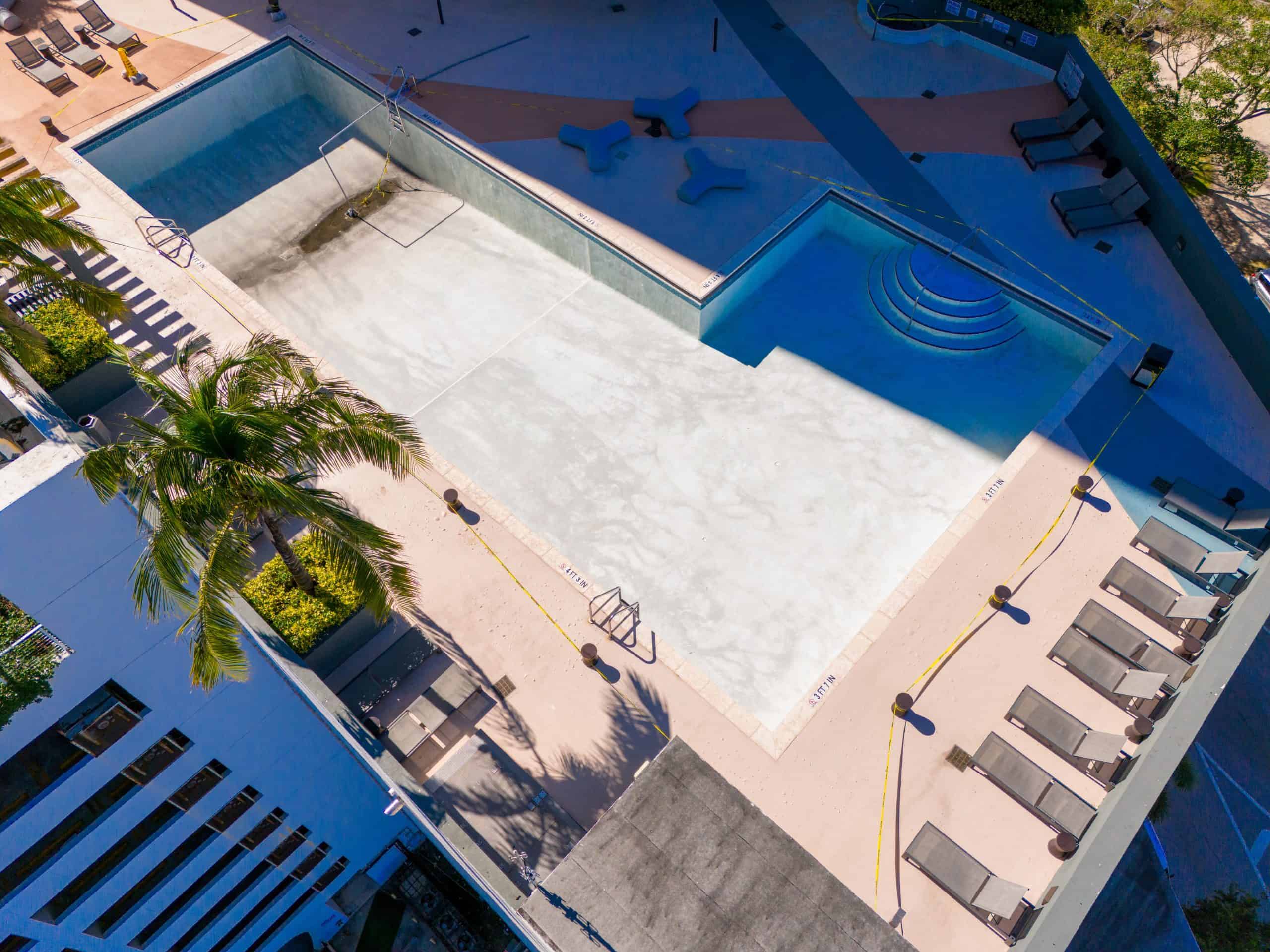Stop dealing with rough, stained surfaces that cut feet and drain your wallet through constant repairs.


Your pool becomes the backyard centerpiece you actually want to use. No more avoiding the shallow end because the surface feels like sandpaper against your feet.
The water stays cleaner longer because the new surface doesn’t harbor algae in microscopic cracks. Your chemical costs drop because you’re not constantly fighting imbalances caused by a deteriorating finish.
Property values in Camelot reflect well-maintained pools, and yours will stand out for all the right reasons. You’ll have a pool that looks as good as it feels, with finishes designed specifically to handle Florida’s relentless sun and humidity.
We’ve been handling pool resurfacing throughout Broward County for years. We understand exactly what Florida’s climate does to pool surfaces and how to build finishes that last.
Every project gets the same thorough approach: proper surface preparation, quality materials that can handle UV exposure and temperature swings, and installation techniques that prevent the common failures other contractors miss. Our CPO certification ensures industry-leading practices and safe pool operations.
We’re not the cheapest option in Camelot, and that’s intentional. You’re investing in fewer problems, longer-lasting results, and a team that shows up when they say they will.

First, the existing surface gets completely removed down to the structural shell. This isn’t a patch job – everything that’s damaged, loose, or compromised comes out. You’ll see exactly what condition your pool structure is in.
Next comes surface preparation and any necessary structural repairs. Hairline cracks get addressed, and the shell gets properly prepped for the new finish. This step determines whether your resurfacing lasts five years or fifteen.
Then we apply your chosen finish material using techniques specific to Florida’s climate. Whether it’s plaster, pebble, or aggregate, the application process accounts for temperature, humidity, and curing requirements that many contractors ignore.
The final phase covers startup procedures and detailed care instructions for the first month. This curing period is critical – skip these steps and even the best materials can fail prematurely.

Ready to get started?
Your pool resurfacing includes complete removal of the old surface, structural assessment and repairs, professional surface preparation, and installation of your chosen finish material. You get quality materials designed for Florida’s climate and proper application techniques that ensure longevity.
Camelot pool owners often deal with specific challenges like salt air exposure and UV damage that accelerate surface deterioration. The materials and techniques we use account for these local conditions, not just generic pool resurfacing approaches that might work in other climates but fail here.
The process also covers startup procedures, chemical balancing, and detailed care instructions for the first month. You’ll know exactly what to do and when to do it, with support throughout the critical curing period.

Ready for a Pool You'll Love?
Contact us today for a free quote!
DCP Pool Services
Company
Useful Links